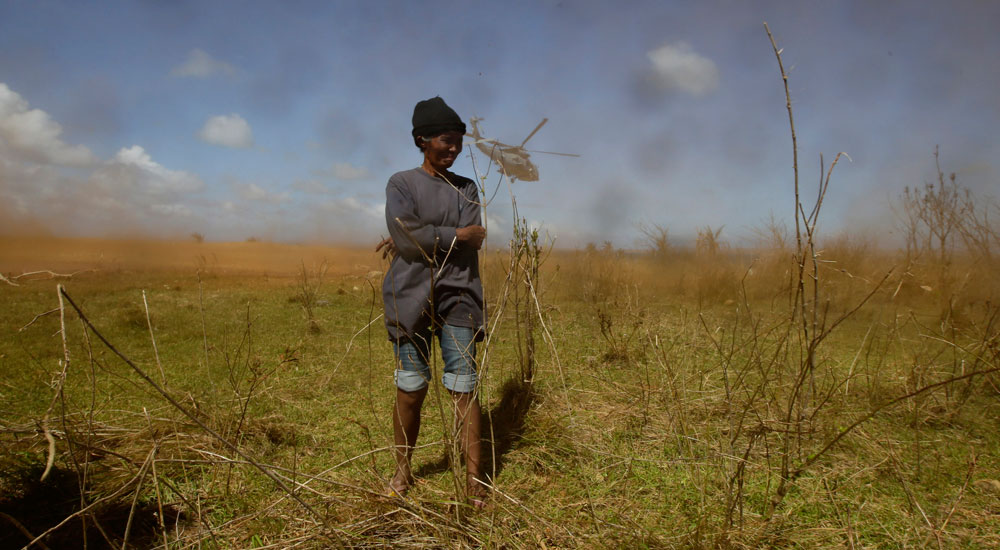
A trapped resident on a “Yolanda”-devastated field on Manicani island, Eastern Samar province. The damage to Philippine rice farms, brought on by severe storms, and government plans to import half a million ton of the staple grain are not “likely to have a significant impact on the global rice market,” the International Rice Research Institute says. AP
MANILA, Philippines—The damage to Philippine rice farms, brought on by severe storms, and government plans to import half a million ton of the staple grain are not “likely to have a significant impact on the global rice market.”
According to Samarendu Mohanty, an economist at the International Rice Research Institute (IRRI) based in Laguna, the surplus rice in Thailand “should keep (international) prices stable in the coming months, even if the Philippines imports more while India exports less.”
He was referring to one of the major exporters, India, where flooding in the aftermath of a cyclone similarly devastated crops in the coastal states of Odisha and Andhra Pradesh.
He wrote in a regular post at the IRRI website that, before the extreme weather events struck, rice prices in major exporting countries have already declined by up to 20 percent in the past few months due to weak global demand.
Mohanty, who heads the IRRI’s social sciences division, said the decline was most pronounced in Thailand, where prices dropped by about $100 per ton. This was attributed to the Thai government’s decision to offload some of its stockpile.
Based on IRRI data, Thailand was the world’s top rice exporter at 6.9 million tons in 2009, while India ranked fourth with 2.1 million tons.
“The prospect of a good wet season crop in the majority of rice-growing countries in Asia have kept potential buyers on the sidelines because of the expectation that prices will weaken further in the coming months,” Mohanty said.
Last week, the National Food Authority decided to import 500,000 metric tons of rice in the coming months to top up its buffer stock, which is being depleted by relief efforts for typhoon victims.
“This is to maintain our buffer stock which has dwindled because of recent typhoons,” NFA director Rex C. Estoperez said in a Tuesday interview.
The NFA is mandated to maintain a buffer stock that should last 15 days which, at a national consumption rate of 34,000 MT daily, is about 500,000 MT.
In a report issued last Tuesday, the Food and Agriculture Organization (FAO) of the United Nations projected that Philippine imports of milled rice would jump by 20 percent to 1.2 million metric tons in 2014.
The FAO also slashed its 2013 forecast for Philippine rice output by 900,000 MT to 18.9 million MT.
These changes were attributed to the combined effects of typhoons “Santi” and “Yolanda,” which affected a third of the country’s rice producing areas.
Santi ravaged northern Philippines last October, when the harvest for this year’s main crop—accounting for 55 percent of the country’s yearly rice output—was under way.
Yolanda razed central Philippines when some provinces were still harvesting the main crop while others have started planting the secondary crop, which is due for harvest in early 2014.
RELATED STORIES:
FAO appeals for assistance to Visayas farmers
PH needs about P1B to shield food sector